- What We Do
- Agriculture and Food Security
- Democracy, Human Rights and Governance
- Economic Growth and Trade
- Education
- Environment and Global Climate Change
- Gender Equality and Women's Empowerment
- Global Health
- Humanitarian Assistance
- Transformation at USAID
- Water and Sanitation
- Working in Crises and Conflict
- U.S. Global Development Lab
Speeches Shim
- CHILD HEALTH
- IMMUNIZATION
- MATERNAL HEALTH
- NEWBORN HEALTH
- ENVIRONMENTAL HEALTH
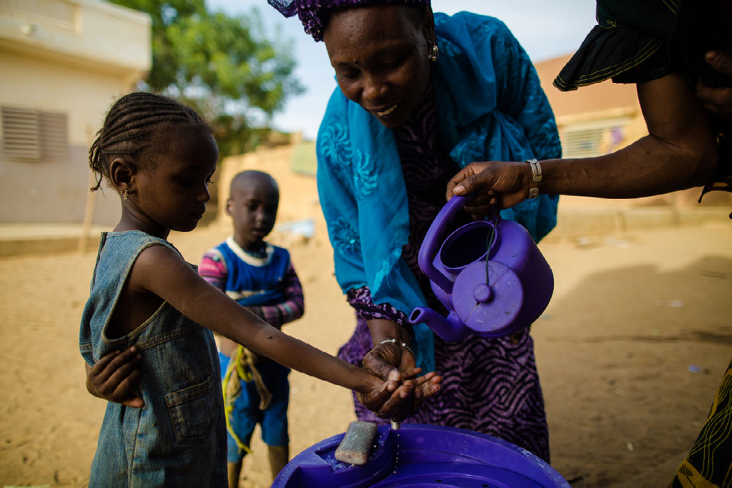
Women and girls without access to toilets spend 97 billion hours each year looking for a place to relieve themselves, translating into 97 billion hours of lost productivity.
Currently, 2.1 billion people live without access to safe drinking water, and approximately 4.4 billion people are without access to adequate sanitation. By 2050, some regions could see their economic growth decline by as much as six percent of their Gross Domestic Product (GDP) as a result of water pollution, increasing water demand, and three dwindling water supplies, which could significantly increase state fragility and the risk of failure.
As a result of USAID programs in Fiscal Year 2016, more than 3.1 million people received sustainable access to an improved water supply, and more than 3 million people received improved access to sanitation facilities. These results include more than 500,000 women and girls benefiting from improved water services and more than 1.8 million women and girls gaining access to improved sanitation. USAID managed these and other accomplishments through a wide variety of initiatives in 47 countries and regions, guided by the U.S. Government Global Water Strategy.
USAID's Response
- Acute lower respiratory infections, mainly pneumonia, are the leading infectious cause of death among children under-5 and are closely associated with exposure to indoor smoke from cooking with biomass fuels. USAID supports operational research to better understand adoption and use issues related to improved cookstoves to reduce indoor air pollution.
- Diarrhea, another leading killer of children, is largely caused by unsafe water, inadequate sanitation and poor hygiene. USAID supports local governments and stakeholders to apply evidence-based approaches to strengthen the systems that provide WASH services to households and in institutional settings such as safe household drinking water supply, community-led total sanitation, market-based sanitation, and hygiene social and behavior change.
- Neglected Tropical Diseases affect over 1 billion people, causing chronic disability and death. Water, sanitation, and hygiene are integral to the control, prevention, and elimination of these diseases. USAID supports the adoption of evidence-based hygiene behaviors to reduce mortality in both rural and urban populations at the greatest risk of mortality from water-borne disease.
- Malaria prevention efforts and USAID’s integrated vector management [PDF, 10MB] system strengthens our ability to combat malaria and improve environmental health by combining both approaches into a single effort.
USAID's Impact
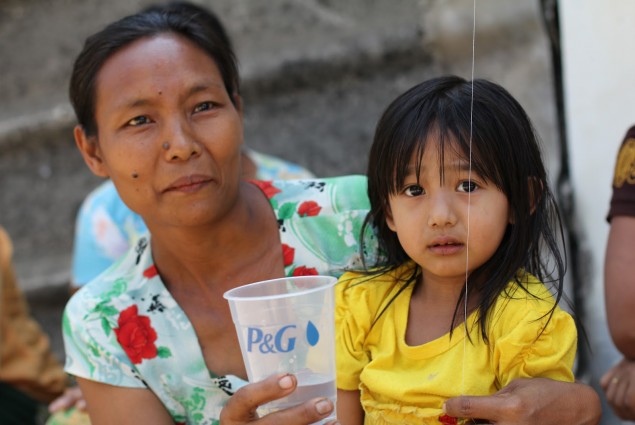
USAID has made 1,800 private sector partnerships, expecting to leverage more than $38 billion in non-U.S. government funds.
In Burma, USAID and Procter & Gamble partnered to provide clean drinking water and promote sanitation practices. Additionally, in 2016, USAID launched the USAID-Gap, Inc. Women + Water Alliance and redoubled its efforts with the Coca-Cola Company Water and Development Alliance. These partnerships support women and girls in vulnerable communities by improving their access to WASH services and amplifying their voices in decision-making about water use and management. Photo credit: Kelly Ramundo/USAID
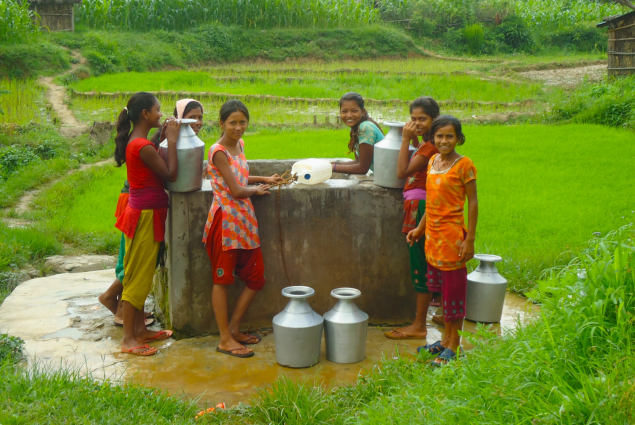
In Fiscal Year 2016, 1.8 million women and girls gained access to improved sanitation through USAID projects like Safe-WASH II.
In Nepal, small huts, called chhau goth, have been home to women and girls during their menstrual periods for centuries. USAID’s Safe-WASH II project works with religious leaders improve sanitation and hygiene behaviors for women by using community ties that were established in previous USAID projects. Photo credit: USAID/Nepal
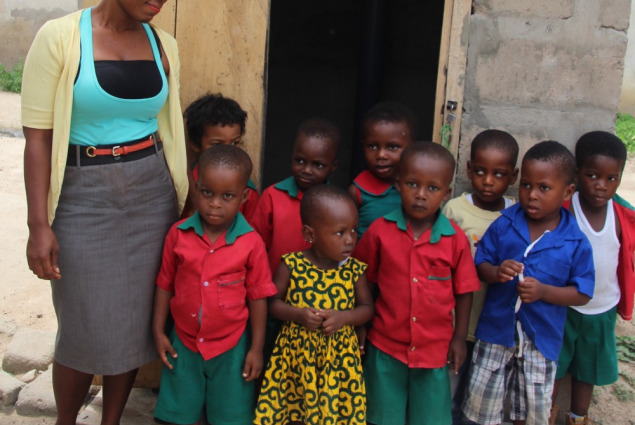
Since 2015, USAID’s support helped bring sanitation to 65,000 Ghanaians.
Since 2015, USAID’s support helped bring sanitation to 65,000 Ghanaians. In 2016, USAID piloted a new latrine in Ghana called the Digni-Loo through the WASH for Health initiative. It’s simple to install, affordable, comfortable, and easy to clean. Zainat Boye and her students at Ibrahim Memorial School are some of the recipients of a Digni-Loo. Photo credit: Seema Johnson/USAID
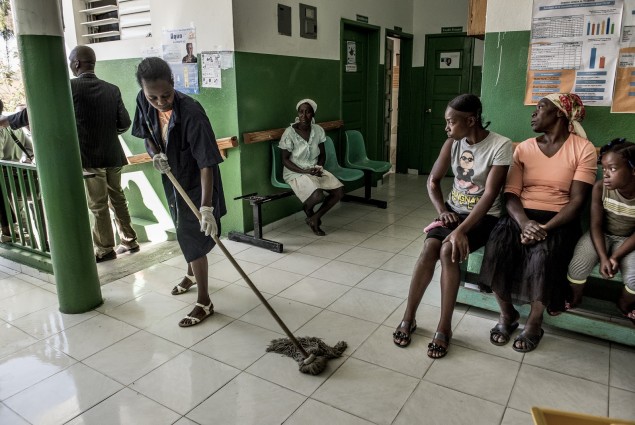
USAID works with the Haitian government to create sanitation action plans in the wake of natural disaster-induced waterborne illnesses.
In May 2016, heavy rains in Haiti brought an increase in cholera cases. To combat the waterborne illness, USAID is working with the Government of Haiti to ensure proper protection and use of water resources, which includes upgrading wastewater treatment systems in two hospitals in alignment with the Government of Haiti’s plan to eliminate cholera in Haiti by 2022. Additionally, after a rapid assessment of 22 Haitian health facilities, like this one in Marmalade, Haiti, USAID worked with local governments to adopt Clean Care standards into facilities. Photo credit: Karen Kasmauski/MCSP and Jhpiego

From 2012 to 2017, USAID helped 12.2 million people gain access to basic drinking water services.
USAID is working with partners to scale up what works to save lives, and we're reporting back annually on progress. Check out the 2018 Acting on the Call report for more information.
Resources
- USAID’s Global Waters
- USAID Global Water and Development Report [PDF, 1.9MB]
- US Government Global Water Strategy 2017 [PDF, 1.9MB]
- Water, Sanitation, and Hygiene Partnerships and Learning for Sustainability (WASHPaLS)
- USAID Water and Sanitation
- USAID Acting on the Call: Ending Preventable Child and Maternal Deaths
For more information about how USAID solves global water and sanitation challenges, visit Global Waters. Supported by the USAID Water Office, Global Waters has the aim of fostering global knowledge and collaboration for sustainable water, sanitation, and hygiene access for all, and providing water practitioners with the latest news, learnings, and resources from USAID and our partners.

Comment
Make a general inquiry or suggest an improvement.